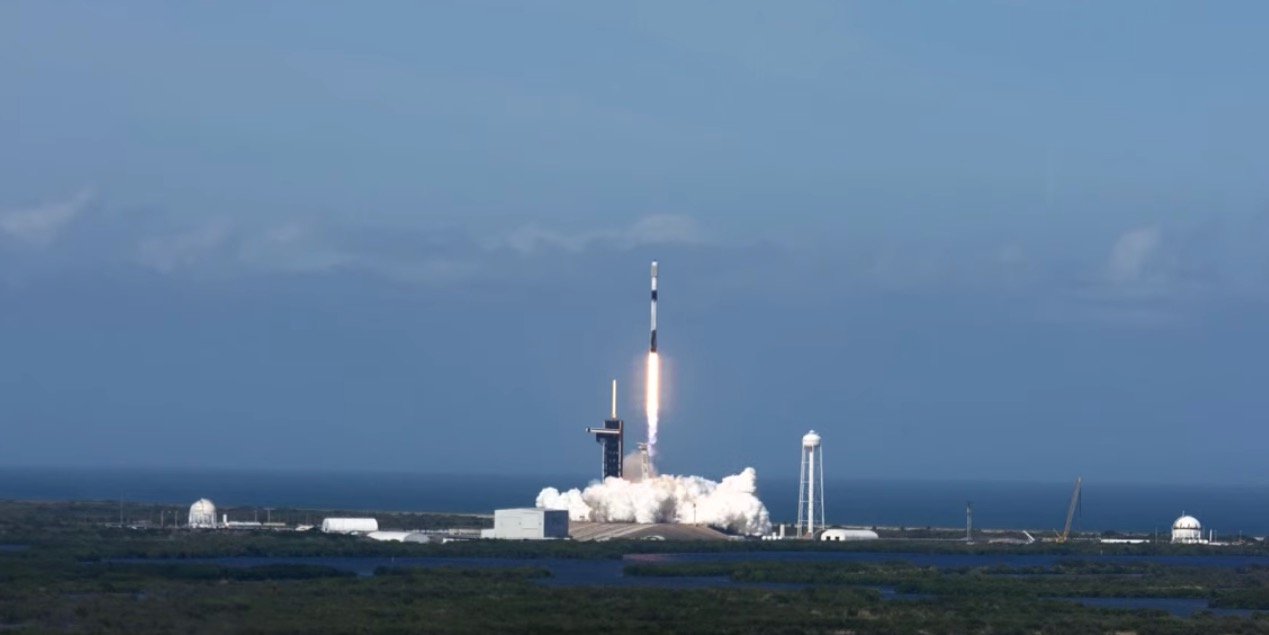NASA is concerned about SpaceX's new generation of Starlink satellites

NASA has raised concerns about SpaceX's new Starlink satellites, including an increase of the risk of collision in orbit, in a letter to the Federal Communications Commission (FCC).
The five-page letter was submitted to the FCC Tuesday (Feb. 8) and was first reported in SpaceNews. The letter, which includes a separate one-page letter from the National Science Foundation, was sent on NASA's behalf by the National Telecommunications and Information Administration.
SpaceX submitted a proposal to the FCC to put 30,000 more Starlink internet satellites into orbit as part of a "Gen 2" Starlink system. There are currently about 1,800 operational Starlink satellites in orbit and there have already been several near-misses in orbit; one study has suggested Starlinks are responsible for half of all close encounters in low-Earth orbit.
With this track record, NASA has some serious reservations about SpaceX's proposed new fleet.
Related: SpaceX's Starlink satellite megaconstellation launches in photos
NASA has "concerns with the potential for a significant increase in the frequency of conjunction events and possible impacts to NASA’s science and human spaceflight missions," the agency stated in the letter, which was signed by Samantha Fonder, identified as NASA's representative to the Commercial Space Transportation Interagency Group.
"NASA wants to ensure that the deployment of the Starlink Gen 2 system is conducted prudently, in a manner that supports spaceflight safety and the long-term sustainability of the space environment," the letter adds.
Get the Space.com Newsletter
Breaking space news, the latest updates on rocket launches, skywatching events and more!

According to the letter, NASA has significant concerns about whether or not SpaceX's automated collision avoidance system would be enough to cover the five-fold increase of objects in orbit. All of these thousands of new satellites will likely have an effect on both crewed and uncrewed missions in orbit, the agency says, due to an "increase in conjunctions" or close encounters with other objects.
This not only creates and increases collision risk, but it also adds launch risk, as there would be fewer launch windows available due to thousands more satellites passing within a rocket's planned flight path.
"NASA is also concerned with an increasing unavailability of safe launch windows, especially for missions requiring instantaneous or short launch windows," the agency said, citing the Europa Clipper mission as an example.
SpaceX's Gen 2 satellites will also foreseeably cause problems for current scientific missions. The new satellites could double the number of Hubble Space Telescope images that contain satellite streaks. That amount of interference now stands at 8%, the agency said.
Worse, these additional Starlink satellites could worsen the risk of interference with planetary defense surveys performed by ground-based telescope, which NASA uses to scan the skies for potentially threatening asteroids (no imminent celestial objects have yet been found for our planet.)
The agency, however, did not express explicit opposition to the FCC granting SpaceX a license for Starlink Gen 2, but instead said that such an expansion would require close coordination with other affected parties. SpaceX, which rarely responds to media inquiries, did not respond to a SpaceNews request for a response.
Follow Elizabeth Howell on Twitter @howellspace. Follow us on Twitter @Spacedotcom and on Facebook.
Join our Space Forums to keep talking space on the latest missions, night sky and more! And if you have a news tip, correction or comment, let us know at: community@space.com.

Elizabeth Howell (she/her), Ph.D., was a staff writer in the spaceflight channel between 2022 and 2024 specializing in Canadian space news. She was contributing writer for Space.com for 10 years from 2012 to 2024. Elizabeth's reporting includes multiple exclusives with the White House, leading world coverage about a lost-and-found space tomato on the International Space Station, witnessing five human spaceflight launches on two continents, flying parabolic, working inside a spacesuit, and participating in a simulated Mars mission. Her latest book, "Why Am I Taller?" (ECW Press, 2022) is co-written with astronaut Dave Williams.









